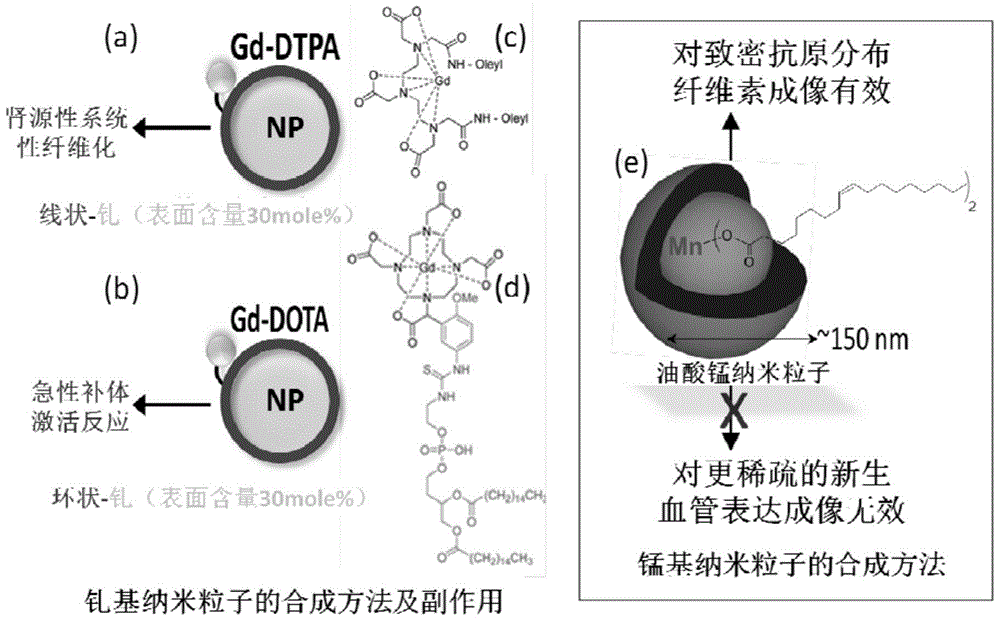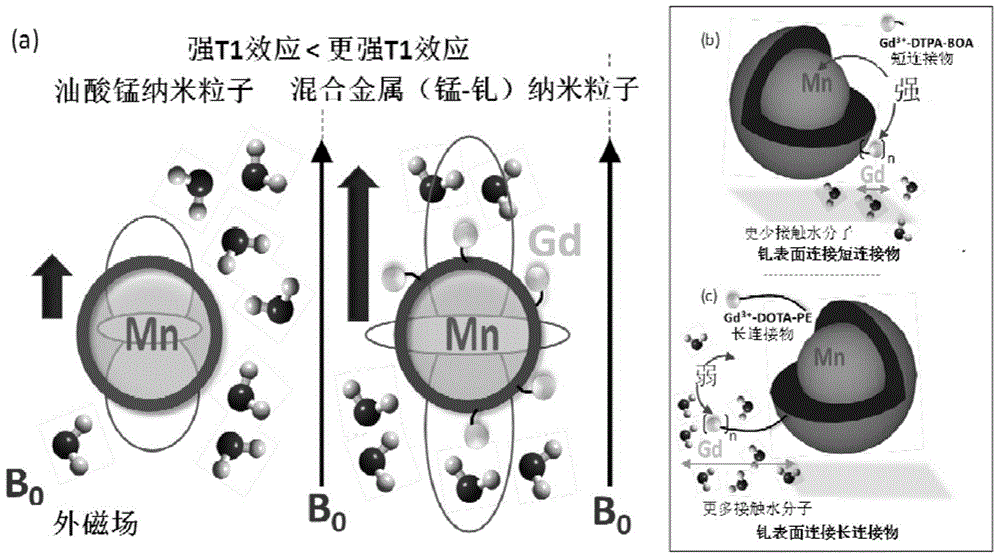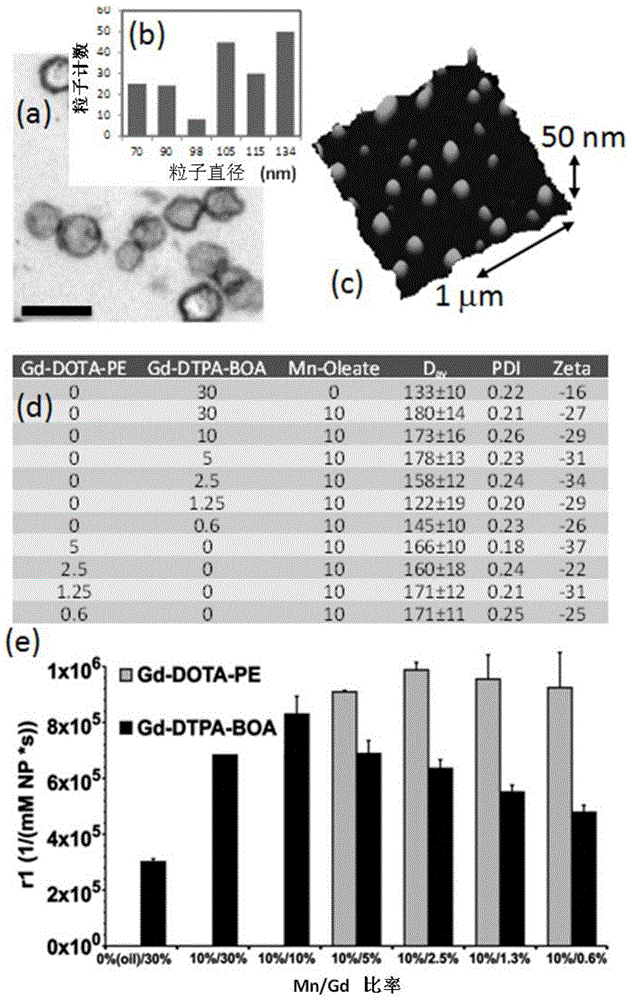Integrin-targeted manganese-gadolinium hybrid bimetallic paramagnetic nanocolloids and their application in magnetic resonance imaging of neovascularization
A paramagnetic nano-integrin technology, applied in the field of medicine, can solve problems such as inability to effectively predict acute vascular events
- Summary
- Abstract
- Description
- Claims
- Application Information
AI Technical Summary
Problems solved by technology
Method used
Image
Examples
Embodiment 1
[0043] Example 1 Integrin α v beta 3 Preparation of targeted manganese-gadolinium hybrid bimetallic paramagnetic nanoparticles colloid
[0044] (1) Add 360ml of ethanol-water-n-hexane mixture into a 500ml round bottom flask, add 10g of manganese chloride tetrahydrate (MnCl 2 .4H 2 O) and 40g sodium oleate (TCI chemical), reacted at 80°C for 14 hours, then reacted at 25°C for 4 hours, washed with water, salt, Na 2 SO 4 After drying and rotary evaporating to dryness to remove the solvent, divalent manganese oleate is prepared, wherein, in the ethanol-water-n-hexane mixture, the volume ratio of ethanol, water and n-hexane is 4:5:9;
[0045] (2) Under a nitrogen atmosphere, suspend 10 g of divalent manganese oleate MnOL in 20 mL of sorbitan sesquioleate as a concentrate, and add phospholipids at 141 MPa and 4 °C Surfactant, so that its final concentration is 0.02g / ml, fully mixed, described phospholipid surfactant comprises 0.1 mol% menadione dimethazine sulfite-polyethylene ...
Embodiment 2
[0047] Example 2 Integrin α v beta 3 Preparation of targeted manganese-gadolinium hybrid bimetallic paramagnetic nanoparticles colloid
[0048] (1) Add 360ml of ethanol-water-n-hexane mixture into a 500ml round bottom flask, add 10g of manganese chloride tetrahydrate (MnCl 2 .4H 2 O) and 40g sodium oleate (TCI chemical), reacted at 80°C for 14 hours, then reacted at 25°C for 4 hours, washed with water, salt, Na 2 SO 4 After drying and rotary evaporating to dryness to remove the solvent, divalent manganese oleate was prepared, wherein, in the ethanol-water-n-hexane mixture, the volume ratio of ethanol, water and n-hexane was 4:5:9.
[0049] (2) Under a nitrogen atmosphere, suspend 10 g of divalent manganese oleate MnOL in 20 mL of polysorbate 80 as a concentrate, and add a phospholipid surfactant at 141 MPa and 4 °C to make the final concentration 0.02g / ml, fully mixed, described phospholipid surfactant comprises the phosphatidylethanolamine of the integrated polyethylene ...
Embodiment 3
[0051] Example 3 Application of manganese-gadolinium hybrid bimetallic paramagnetic nanoparticles in magnetic resonance imaging
[0052] 1. Optimization of MRI parameters:
[0053] In order to optimize the parameters of magnetic resonance imaging, the present invention has previously prepared a v beta 3 The manganese-gadolinium hybrid bimetallic paramagnetic nanoparticles (MnOL-Gd) of the specific biomolecules are used for the following research, the preparation method of MnOL-Gd is the same as that of Examples 1 and 2, but the phospholipid surfactant used does not contain horse Integral polyethylene glycol 2000 phosphatidylethanolamine modified by aryl, amino, sulfhydryl or carboxyl groups and targeting α v beta 3 specific biomolecules.
[0054] All MRIs were performed on a Philips clinical 3.0T magnetic resonance scanner, and standard birdcage coils were used in in vitro experiments. According to the method of the present invention, MnOL-Gd NCs with different concentrat...
PUM
 Login to View More
Login to View More Abstract
Description
Claims
Application Information
 Login to View More
Login to View More - R&D
- Intellectual Property
- Life Sciences
- Materials
- Tech Scout
- Unparalleled Data Quality
- Higher Quality Content
- 60% Fewer Hallucinations
Browse by: Latest US Patents, China's latest patents, Technical Efficacy Thesaurus, Application Domain, Technology Topic, Popular Technical Reports.
© 2025 PatSnap. All rights reserved.Legal|Privacy policy|Modern Slavery Act Transparency Statement|Sitemap|About US| Contact US: help@patsnap.com



